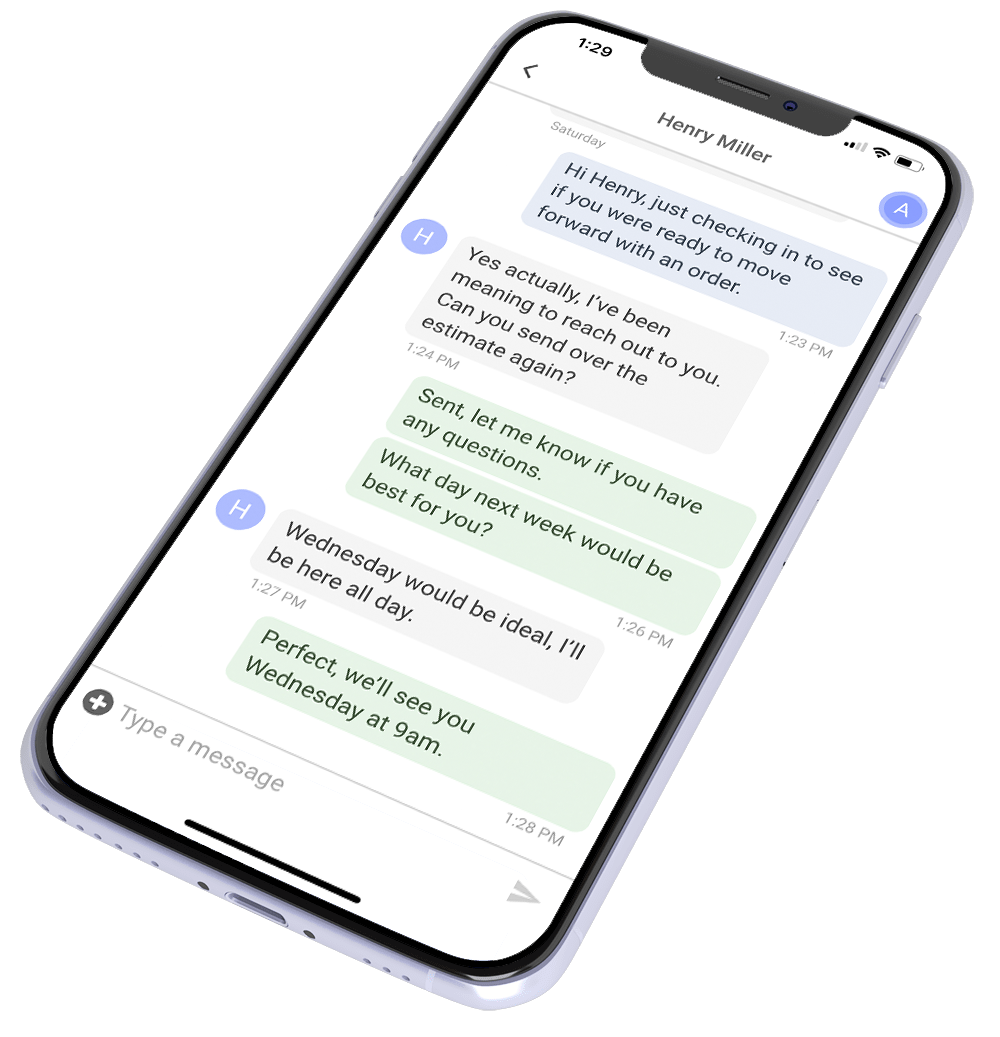Struggling with roofing CRM software? Discover how the right system can save you hours, close more jobs, and eliminate chaos.
A strong CRM turns chaos into clarity. It tracks leads, automates follow-ups, and keeps your team working in sync. Done right, it’s like adding extra hands to your business—without the payroll costs. But here’s the rub: many roofing companies stumble when it comes to choosing, setting up, or using their CRM. Instead of solving problems, it often creates new ones.
These missteps waste time, drain profits, and frustrate crews. Worse, they can cost you sales. The upside? Every one of these issues is avoidable. By the end of this article, you’ll have the tools to dodge these pitfalls, protect your business, and maybe even laugh at those “what were we thinking?” moments.
Let’s dig into why so many roofers miss the mark—and how you can ensure you’re not one of them.

Mistake #1: Choosing the Wrong Roofing CRM Software
Picking the wrong CRM often starts with chasing the lowest price. A cheap CRM might seem like a win at first, but it’s a costly mistake. Think of it as patching a leaky roof with duct tape—it saves money now but wrecks everything later. Many bargain CRMs lack the features roofers need, like job tracking and automated quotes. Without those tools, you’ll drown in paperwork and lose hours juggling calls and schedules.
Imagine quoting three jobs by hand while trying to coordinate a crew and handle incoming leads. A roofing-specific CRM would handle that chaos, but a budget option leaves you spinning your wheels. Skipping the right tools for a cheaper price is like hiring the lowest bidder—it costs you more in the long run.
Another common error is ignoring scalability. A CRM that works for ten leads might collapse when your business grows. Limited automations and sluggish systems can’t keep up with a booming operation. Ask yourself: Can this CRM track twice as many jobs next year? Will it automate follow-ups when leads pour in? If it feels stretched today, it’ll snap tomorrow. Choosing a system without room to grow is like building a roof that can’t handle heavy snow—it’s bound to fail.
Finally, don’t overlook user-friendliness. Even the most powerful CRM is worthless if your team won’t use it. A system that’s too complicated wastes time, creates frustration, and gets abandoned. Test any CRM before committing. Let your crew try it. If it’s clunky or slows them down, it’s not the right fit. The best tools work as easily as your favorite hammer: intuitive, reliable, and ready to go without instructions.
Read: Roofing CRM Features Tier List
Mistake #2: Misusing CRM Automation
Failing to use automation properly can sabotage your CRM’s potential. The first error? Underusing automation altogether. Tasks like follow-ups, customer updates, and review requests eat up hours if handled manually. Automation tackles these with precision, freeing you to focus on the work that truly needs your attention.
Picture this: A lead requests a quote. You forget to follow up, and they hire someone else. Now imagine an automated system that sends a follow-up text the next day and an email a week later. That lead stays warm, and you’re freed up to close the next job. Tools like ProLine’s automated campaigns turn missed opportunities into steady wins, ensuring you don’t leave money on the table.
But automation isn’t a magic fix. Over-automation without a plan creates just as many problems. Spamming leads with constant messages won’t close deals—it’ll irritate prospects. Automation should guide leads, not overwhelm them. Start simple. Map out what your customers need and when. Follow up quickly but leave space for a reply. A well-paced approach keeps leads engaged without pushing them away.
Finally, poorly planned automations lead to ineffective campaign sequencing. Messages arriving late, in the wrong order, or missing critical details confuse potential customers. Confusion leads to lost sales. To avoid this, test every campaign step before launching. Space your messages naturally, so they feel like a conversation, not a sales pitch. When done right, a well-structured sequence turns interest into action without dropping leads along the way.
Mistake #3: Mismanaging Data and Reports
Your CRM is only as good as the data inside it. Inconsistent data entry is the first major misstep. A misspelled name, a blank phone number, or an unknown lead source can derail reports and cripple decision-making. Imagine pulling stats only to find half your jobs listed as “unknown” under lead source. It’s like roofing without a chalk line—your process won’t stay straight.
The solution? Set clear rules. Every team member should log the same details—names, addresses, phone numbers, and job types—every single time. Consistency keeps your CRM running smoothly and ensures your reports provide the insights you need to grow.
Even with clean data, ignoring analytics is another costly mistake. CRMs generate valuable insights if you’re willing to dig. Numbers reveal which leads convert, which campaigns fall flat, and how fast your team responds. Skipping these reports is like leaving gold buried in your backyard.
Start simple. Track response times and lead conversion rates. Identify your best-performing lead sources and double down on them. If response times drag, fix the bottleneck. A great CRM delivers these insights, but it’s up to you to act on them.
On the flip side, don’t drown in data overload. Endless charts and tables can feel like staring at a roof full of shingles, trying to find a single crack. Focus on the metrics that matter most—response times, job progress, and lead performance. Nail the essentials first, then expand your view. Chasing every number is a distraction; sharp focus drives results.
Mistake #4: Missing the Mark on Speed-to-Lead
When it comes to leads, timing is everything. Responding too slowly is a critical mistake. The moment someone reaches out, their interest peaks—and fades just as quickly. If you wait too long to follow up, they’ll have already moved on to a competitor. The roofing game doesn’t wait.
The solution? Automate your responses. Tools like ProLine send texts or emails the second a lead hits your inbox. Picture this: A homeowner fills out a form on your site. Before they even close their browser, your CRM has already sent a reply. That’s how you keep their attention and book the job before anyone else.
But speed alone isn’t enough. Overwhelming new leads with too many messages can do more harm than good. Bombarding prospects with emails and calls doesn’t impress—it irritates. Balance is key. Start with a quick acknowledgment, follow up the next day with useful details, and space out future messages to keep the conversation alive. This steady rhythm builds trust and keeps you top of mind without driving leads away.
Finally, many businesses miss opportunities by failing to follow up. Some leads don’t convert immediately, but that doesn’t mean they’re lost. What kills a lead isn’t hesitation—it’s neglect. A missed call or an untracked email can leave money on the table.
Stay persistent. Use reminders to prompt your team, automate tasks to ensure follow-ups happen on time, and call when it matters. A little extra effort turns yesterday’s “maybe” into tomorrow’s “yes.” Every lead deserves a second chance—don’t let them slip through the cracks.
Mistake #5: Ignoring Integration and Customization
Your CRM should simplify your workflow, not complicate it. Yet, many roofing businesses fall into the trap of failing to integrate their tools. Estimating software, accounting systems, and scheduling apps all play crucial roles—but when these tools don’t communicate, they create more work.
Picture this: You finalize a quote in one program, then spend an hour re-entering those details into your CRM. It’s wasted time that adds up fast. A well-integrated CRM eliminates these bottlenecks. For example, ProLine syncs seamlessly with your systems, ensuring quotes, invoices, and job updates flow effortlessly between tools.
Another common mistake is neglecting customization. Out-of-the-box setups rarely fit your business perfectly. Generic pipelines and workflows might check the basics but fail to support the nuances of roofing operations. A CRM tailored to your needs lets you work smarter, not harder. Build pipelines that mirror your sales flow, create templates that reflect your style, and use automation for job updates and follow-ups. Customization isn’t a luxury—it’s essential for getting the most out of your system.
On the flip side, it’s easy to overcomplicate things. Adding every feature and workflow can turn your CRM into a maze. Complex setups confuse teams, slow processes, and let jobs fall through the cracks. Keep it simple. Start with the essentials: tracking leads, sending quotes, and managing follow-ups. Expand only when your business demands it. Complexity isn’t progress—functionality is.
Mistake #6: Failing to Get Team Buy-In
Even the best CRM is useless if your crew won’t use it. Tools that sit idle don’t save time or boost sales—they gather dust. A common mistake is assuming your team will naturally adopt the system without understanding how it benefits them. To avoid this, tie the CRM to results they care about: fewer headaches, less busywork, and more paychecks. Walk them through the dashboard. Show how it streamlines their day, closes jobs faster, and simplifies communication. When the value is clear, adoption will follow.
Another critical misstep is skimping on training. CRMs don’t teach themselves. Without proper onboarding, your team will guess their way through, use only a fraction of the features, or stick to old habits that waste time. Invest in thorough training sessions. Show each user how the CRM fits their role and follow up with refresher courses. Make training an ongoing effort, not a one-off event. The more confident your team feels, the more effective the tool becomes.
Finally, avoid overburdening your staff. A CRM should lighten the load, not pile on extra work. Manual data entry, endless updates, and unnecessary reminders frustrate teams and lead to pushback. Spread tasks wisely. Use automation to handle repetitive jobs like follow-ups and scheduling. Assign clear roles to balance the workload. When the system runs smoothly, your crew will see it as a tool that saves time—not another task to manage.
Conclusion: Make the Move to a Smarter CRM
Running a roofing business is tough enough—your CRM shouldn’t make it harder. The mistakes we’ve covered waste time, drain profits, and frustrate teams. But here’s the good news: they’re entirely avoidable with the right tools, a smart setup, and a committed team.
If your current system feels more like a problem than a solution, it’s time for a change. ProLine is built specifically for roofers. It automates busywork, tracks every lead, and keeps your team focused on what matters most: closing jobs and growing your business.
Don’t let another lead slip away or waste another day fighting with clunky software. The right CRM can transform your process, save hours every week, and reduce stress across the board. Take control of how you work. Let ProLine show you how to streamline your operations and scale with ease.
Click here to see how ProLine can solve the headaches holding your business back. This isn’t just an upgrade—it’s the smarter way forward.
Watch ProLine in Action
See how ProLine simplifies your workflow and helps you close more jobs. Check out our quick overview video here.
Book Your ProLine Demo
Ready to see how ProLine can transform your business? Schedule a demo and discover how to sell more roofing jobs with less hassle.
Find the Best CRM for Your Business
Not sure which CRM is the right fit? Check out our guide to the 8 best roofing CRMs for residential roofers.



